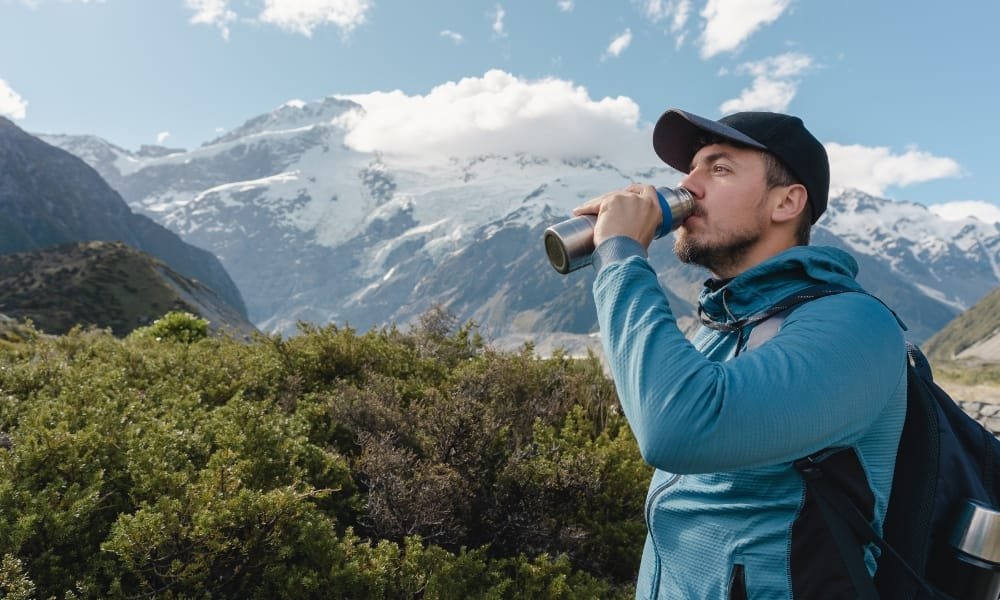Qué llevar a una ruta de senderismo
Hiking is an incredible activity that allows you to connect with nature, exercise, and enjoy stunning scenery. Whether you’re a beginner or a trail expert, it’s essential to be prepared to ensure your adventure is safe and enjoyable. In this guide, we’ll tell you what to bring on a hiking trail, from the basics to additional items that will help make your experience more comfortable and enjoyable.
Appropriate clothing
1. Hiking shoes
Footwear is probably one of the most important items when it comes to hiking. A good pair of hiking boots or shoes will give you the support you need to walk long distances and tackle uneven terrain. Look for sturdy, waterproof footwear with non-slip soles. High-ankle hiking boots are ideal for more difficult trails, while lightweight sneakers are perfect for easier hikes.
2. Breathable and quick-drying clothing
The clothing you wear should be light, breathable, and, above all, quick-drying. Fabrics like polyester, merino wool, or nylon are excellent for keeping you comfortable during your hike. Avoid cotton garments, as they can absorb sweat and stay wet, which could make you uncomfortable or even sick if the weather changes. Remember to bring a light, waterproof jacket in case it rains.
3. Sun protection
The sun can be intense, especially if you’re hiking in open areas or at high altitudes. Wear a cap or hat to protect your head and a pair of sunglasses with UV protection. Also, don’t forget to apply sunscreen to all exposed areas of your body, even on cloudy days.
Water and food

1. Hydration
It’s essential to stay hydrated during your hike, especially if the day is hot or the route is long. Bring a hydration pack or reusable water bottle. On long hikes, it’s recommended to carry at least two liters of water. If you’re in an area with water sources, make sure it’s safe to drink or bring a portable water filter.
2. Energy food
While hiking, your body will be burning a lot of calories, so it’s important to pack light, high-energy foods. Energy bars, nuts, dried fruit, and chocolate are excellent options to keep your energy levels high. Avoid carrying heavy or perishable foods, as they can spoil or be awkward to carry.
Safety equipment
1. Map and compass
Although many hiking trails are well marked, it’s a good idea to bring a topographic map of the area and a compass. Even if you have a GPS on your phone, it’s helpful to have physical maps, as the signal can be lost in some areas.
2. Mobile phone and charger
It’s always a good idea to carry a charged cell phone, especially if you’re in remote areas. If you have a portable charger, bring it with you to ensure your phone has enough battery in case of an emergency.
3. First aid kit
A small first aid kit is a must-have item for any hiker. Make sure it includes bandages, gauze, antiseptic, band-aids, pain relievers, and any other medications you might need. It’s also helpful to carry a whistle in case you need to get someone’s attention.
4. Flashlight or headlamp
If your hike might extend into the night, it’s essential to carry a flashlight or headlamp with extra batteries. Adequate lighting will help you navigate the trail and ensure your safety if you encounter difficult terrain after dark.
Additional equipment
1. Hiking poles
Hiking poles aren’t essential, but they can be very useful, especially on mountain trails or uneven terrain. They help improve balance and reduce pressure on the knees, which can make hiking more comfortable.
2. Insect protection
If you’re hiking in wooded areas or near water, you may encounter mosquitoes and other insects. Bring insect repellent to avoid bites, and don’t forget to wear long-sleeved clothing and long pants if weather permits.
3. Sleeping bag and tent
If you plan to spend the night on the trail, you’ll need to bring a lightweight tent, a sleeping bag suitable for the temperature, and a sleeping mat to insulate yourself from the ground. Make sure your gear is compact and easy to carry.
Related Post: What is Hiking?
Related Post: Hiking Shoes
Final considerations
1. Respect for the environment
Always remember to follow the «Leave No Trace» principles during your hike. Always take your waste with you, even if there doesn’t seem to be a trash can nearby. Help keep the trails clean and safe for future generations.
2. Know the route
Before you set out, research the hiking route you plan to take. Know the difficulty, estimated duration, expected weather, and any potential risks in the area. Inform someone you trust about your itinerary and expected return time.
3. Enjoy the moment
Finally, remember that hiking is an opportunity to enjoy nature, disconnect from your daily routine, and take care of your physical and mental well-being. Don’t rush; take your time to admire the scenery, listen to the sounds of the forest, or simply breathe in the fresh air.
Related post: What to pack in your hiking backpack
Related Post: Hiking in Seville: Exploring Nature Beyond the City
Conclusion
Hiking is one of the most rewarding activities you can do, and being well-prepared is key to ensuring a safe and enjoyable experience. From appropriate clothing to safety equipment, every item plays an important role in your adventure. By following this packing list, you can enjoy your hike with confidence, knowing you’re ready for any situation that may arise. Pack your backpack, lace up your hiking boots, and head out to explore the natural world that awaits!



0 comentarios